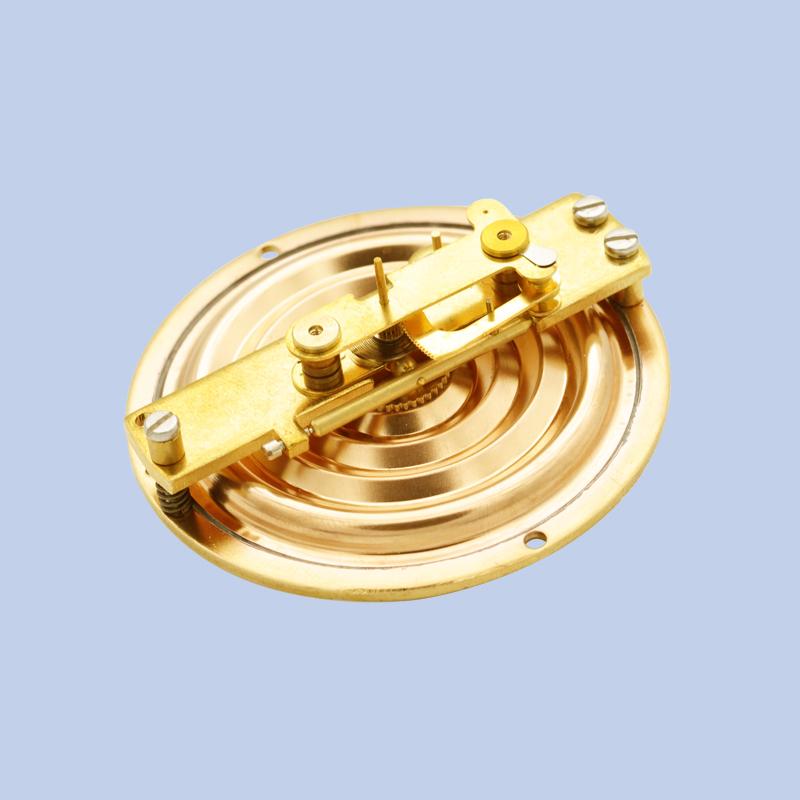
Dec . 22, 2024 03:23 Back to list
oem differential pressure gauge types
Understanding OEM Differential Pressure Gauge Types
Differential pressure gauges are essential instruments used in various industries for monitoring pressure differences between two points in a system. These devices play a crucial role in ensuring optimal performance and safety in processes such as fluid dynamics, HVAC systems, and filtration applications. Original Equipment Manufacturers (OEMs) often offer a range of differential pressure gauge types tailored to meet specific needs, making it essential for professionals to understand their options when selecting the appropriate gauge for their applications.
What is a Differential Pressure Gauge?
A differential pressure gauge measures the difference in pressure between two points. It provides important insights into fluid flow, filter conditions, and system performance, enabling operators to make informed decisions. Commonly used in scenarios like monitoring filters, level measurements, and flow measurements, these gauges come in a variety of types depending on the application and measurement requirements.
Types of OEM Differential Pressure Gauges
1. Mechanical Differential Pressure Gauges
These gauges utilize a diaphragm or a Bourdon tube to measure the pressure difference. They are generally robust, reliable, and require minimal maintenance, making them suitable for many industrial applications. Mechanical gauges can handle high pressures and are typically calibrated to provide accurate readings in challenging environments.
2. Electronic Differential Pressure Gauges
Unlike their mechanical counterparts, electronic gauges use sensors to measure pressure differences. These devices convert pressure readings into electronic signals for higher accuracy and the ability to integrate with digital systems, offering benefits like data logging and remote monitoring capabilities. Electronic gauges are particularly favored in applications requiring precise measurements and real-time data analysis.
3. Digital Differential Pressure Gauges
A subset of electronic gauges, digital differential pressure gauges display readings on an LCD or LED screen. They often feature additional functionalities such as temperature compensation, alarm systems, and the ability to switch between different units of pressure measurement. This type is ideal for users requiring clear and immediate visual feedback of the pressure conditions.
4. Capacitive Differential Pressure Gauges
oem differential pressure gauge types

These gauges utilize capacitive sensors, which measure changes in capacitance due to differential pressure variations. This type of gauge is known for its high sensitivity and accuracy, making it suitable for low-pressure applications where precise data is critical, such as in laboratories or research environments.
5. Differential Pressure Transmitters
While not a gauge in the traditional sense, transmitters measure differential pressure and convert it into a standardized output signal (like 4-20 mA), suitable for integration with control systems. This allows for continuous monitoring and can trigger alarms or adjustments in automated systems. OEMs offer various transmitters for different ranges and applications, ensuring compatibility with existing infrastructure.
Applications of Differential Pressure Gauges
Differential pressure gauges find applications across several sectors
- HVAC Systems Monitoring air filter conditions and ensuring optimal airflow. - Oil and Gas Measuring pressure drops in pipelines and filtration systems. - Water Treatment Ensuring effective filtration processes by monitoring sludge levels and filter conditions. - Pharmaceuticals Critical for maintaining sterile conditions and monitoring pressure drops in clean rooms.
Factors to Consider When Choosing a Differential Pressure Gauge
When selecting a differential pressure gauge, several factors should be considered
- Range and Accuracy Ensure the gauge can accurately measure the expected pressure differential within the required range. - Medium Compatibility The material of the gauge should be compatible with the fluids being measured to prevent corrosion or contamination. - Environmental Conditions Consider factors such as temperature, humidity, and potential exposure to hazardous materials. - Integration Needs Determine whether you need a mechanical gauge or an electronic option for integration into control systems.
Conclusion
Understanding the various types of OEM differential pressure gauges is crucial for selecting the right instrument for your specific application. Whether you require a mechanical gauge for rugged environments or a digital gauge for precise monitoring and data logging, being informed about the options available helps ensure optimal performance and safety in your systems. By taking into account the factors mentioned above, you can confidently choose a differential pressure gauge that best meets your operational requirements.
-
Fluke Differential Pressure Gauges Precision Instruments for Industrial Use
NewsMay.25,2025
-
WIKA Differential Pressure Gauge 700.01 - High Accuracy & Durable Design
NewsMay.25,2025
-
Diaphragm Pressure Gauges High-Accuracy & Durable Solutions
NewsMay.25,2025
-
High-Accuracy Differential Pressure Gauge Diaphragms OEM Factories & Services
NewsMay.24,2025
-
Water Fire Extinguisher Pressure Gauge Durable Supplier Solutions
NewsMay.24,2025
-
Handheld Digital Differential Pressure Gauge Portable, High-Accuracy & Real-Time Data
NewsMay.24,2025
